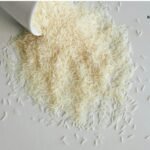Now Reading: Maximize Your Fiber Intake—Zero Bloat, All Wellness!
- 01
Maximize Your Fiber Intake—Zero Bloat, All Wellness!

Maximize Your Fiber Intake—Zero Bloat, All Wellness!
Maximize fiber intake for vibrant health and zero bloat. Unlock digestion secrets with expert tips for a naturally thriving lifestyle.
Have you ever wondered how some people radiate energy while never suffering from discomfort or bloat? The secret could be as simple as ramping up your fiber intake. In a world where every meal counts, discovering how fiber can transform your wellness routine is not only relevant—it’s transformative.
What Is Dietary Fiber and Why It Matters?
Dietary fiber is a type of carbohydrate found in fruits, vegetables, legumes, and whole grains that our bodies cannot fully digest. Yet its benefits are profound. Fiber comes in two forms:
- Soluble Fiber: Dissolves in water to form a gel-like substance, aiding in cholesterol management and blood sugar stabilization.
- Insoluble Fiber: Helps food move efficiently through your digestive system, reducing the risk of constipation and promoting overall gut health.
By incorporating both types into your diet, you create a balanced digestive environment that minimizes bloating and maximizes nutrient absorption.
The Science Behind Fiber and Digestion
When you consume fiber, it interacts with water in your gut, forming a substance that regulates the pace of digestion. This not only ensures that essential nutrients are absorbed more efficiently but also supports a consistently active digestive system. Regular consumption of a fiber-rich diet is linked to lower cholesterol levels, improved blood sugar control, and even a reduced risk of chronic conditions—all of which are crucial for a life free of bloat and thriving energy.
Why Fiber Makes Us Bloat
Despite the many benefits of fiber, it can sometimes lead to bloating, especially if your digestive system isn’t used to it. Here’s why:
- Fermentation by Gut Bacteria: When fiber reaches your colon, it is fermented by the natural bacteria residing there. This fermentation process produces gases like carbon dioxide and methane as byproducts. For some, this gas buildup can lead to uncomfortable bloating and a feeling of fullness.
- Sudden Increase in Fiber Intake: A rapid boost in fiber consumption may overwhelm your digestive system. Your gut needs time to adapt to processing the increased bulk, which can initially result in bloating, cramps, or gas.
- Type of Fiber: The two types of fiber affect the body differently. Soluble fiber, while beneficial in many ways, often produces more gas during fermentation compared to insoluble fiber. Some individuals may find that they experience more bloating when consuming high amounts of soluble fiber.
- Hydration Factor: Fiber works best when it absorbs water. When your diet is high in fiber but low in water, the fiber can cause a buildup that leads to bloating. Ensuring proper hydration helps the fiber move smoothly through your digestive tract.
- Dietary Sensitivities: For those with digestive sensitivities or conditions such as irritable bowel syndrome (IBS), certain fibers or FODMAPs (fermentable oligosaccharides, disaccharides, monosaccharides, and polyols) can trigger increased gas production, exacerbating bloating.
Understanding these mechanisms is key to reaping the benefits of fiber while minimizing discomfort. By slowly increasing your fiber intake and coupling it with adequate water consumption, you can help your digestive system adjust smoothly, reducing the likelihood of bloating.
Practical Tips for Boosting Your Fiber Intake
Here are detailed, actionable strategies to seamlessly integrate more fiber into your daily life:
- Start Your Day Right: Begin your morning with a nourishing, fiber-packed meal. Options like oatmeal or a high-fiber cereal paired with fruits such as bananas or berries provide soluble fiber that helps lower cholesterol and stabilize blood sugar. For an extra boost, sprinkle in chia or flax seeds; these tiny powerhouses not only enhance fullness but also contribute omega-3 fatty acids to your diet.
- Snack Smart: Replace processed, low-nutrient snacks with fiber-rich alternatives. Fresh fruits like apples, pears, or berries offer natural pectin—a type of soluble fiber that aids digestion—while raw vegetables like carrots or celery add crunch and additional fiber. A small serving of mixed nuts provides a complementary mix of soluble and insoluble fibers, keeping energy levels steady and minimizing midday bloating.
- Meal Planning Made Easy: Transform your regular plate by replacing refined carbohydrates with whole grains. Instead of white rice, opt for brown rice or experiment with quinoa, barley, or whole-wheat pasta. Plan meals that naturally blend a variety of fiber sources—lean proteins paired with fiber-rich vegetables and legumes ensure that each dish contributes effectively to your daily fiber target.
- Hydration is Key: Fiber works best when paired with adequate hydration. Water softens the fiber bulk in your intestines, facilitating smoother digestion and preventing constipation-induced bloating. Aim to drink water consistently throughout the day—consider enhancing your water’s appeal with a slice of lemon or a few fresh berries to keep the habit enjoyable.
- Experiment with Recipes: Keep mealtime exciting by exploring creative recipes that feature fiber-rich ingredients. Start your day with a green smoothie packed with leafy greens, berries, and seeds. For lunch or dinner, try a hearty salad filled with beans, dark leafy greens, and whole grains. You can even experiment with homemade fiber bars or muffins made with oats, almond flour, and dried fruits. Diversifying your culinary repertoire not only brings variety to your diet but also ensures a steady supply of vital fiber.
Conclusion
Boosting your fiber intake is more than a dietary tweak—it’s a transformative lifestyle shift toward better digestion, less bloat, and overall radiant health. By understanding why fiber sometimes causes bloating and employing gradual, mindful strategies to integrate it into your daily routine, you can harness all the benefits without discomfort. Embrace these practical tips to set a foundation for enduring wellness, and let each meal be a step toward a healthier, more vibrant you.











